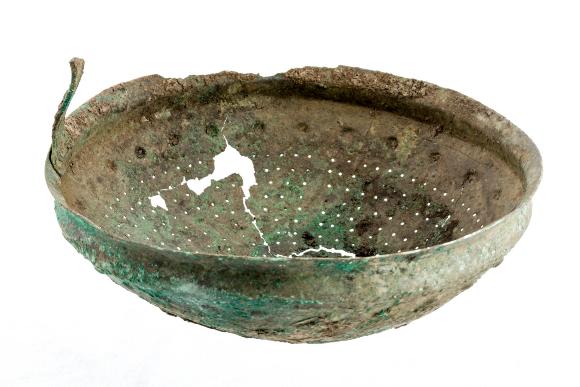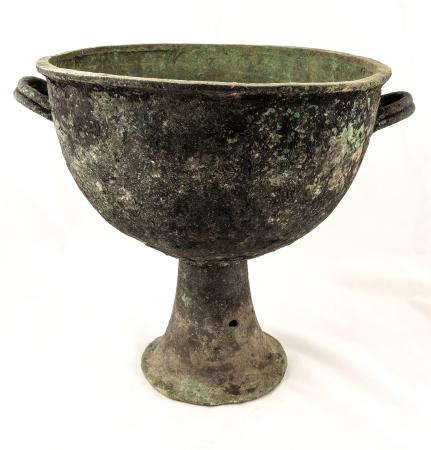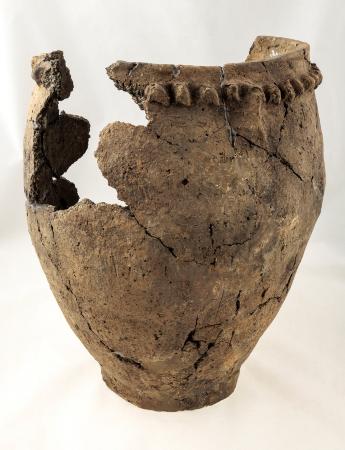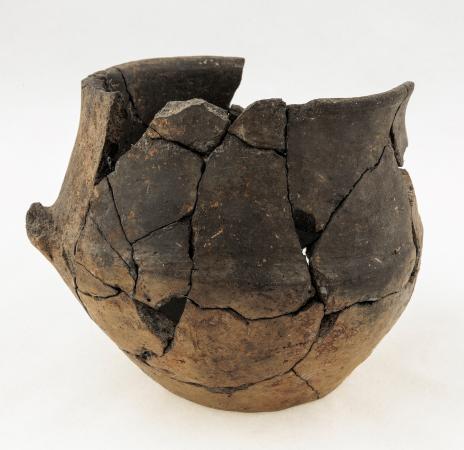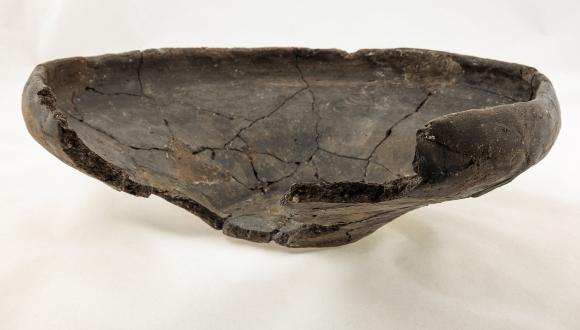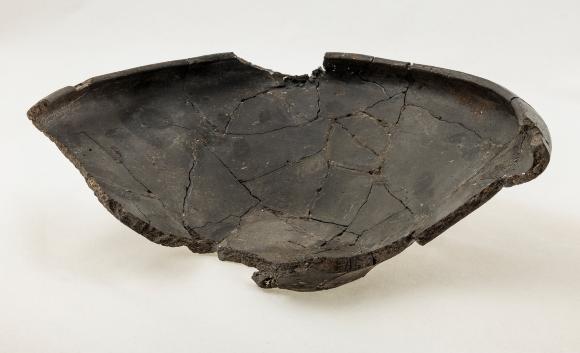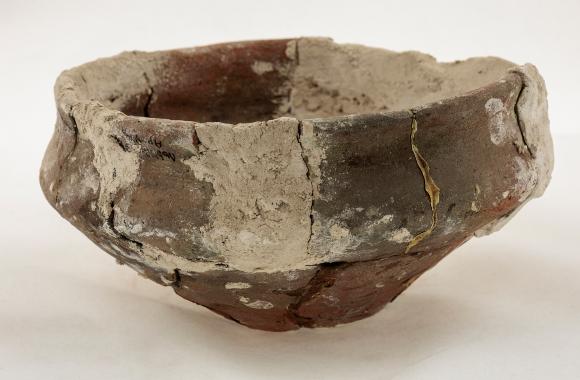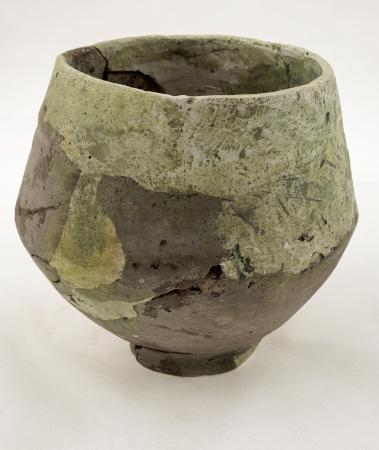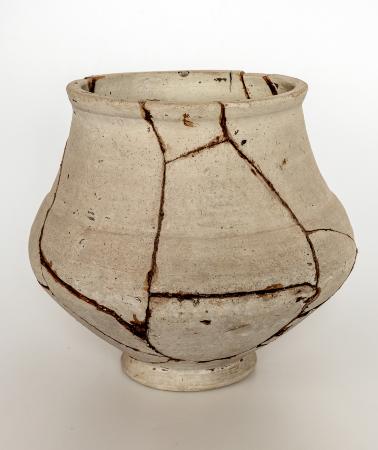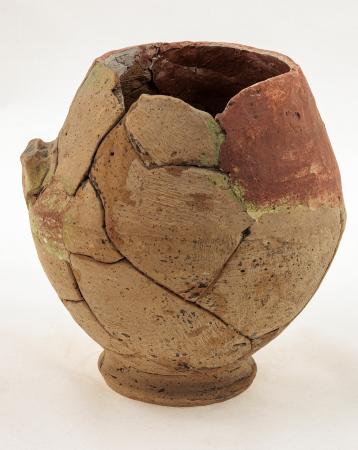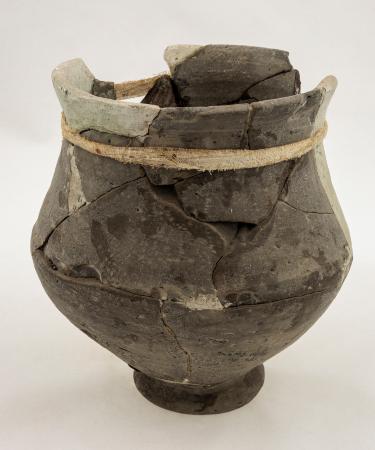Fragment of a vessel with the dog
- Inventory number:
- АР-165
- Creation Date:
- 4th - 3rd millennia BC
- Place of Creation:
- Bilche-Zolote village, Ternopil region
- Provenance:
- Lviv Historical Museum
- Technique:
- molding
- Size:
- 22 x 19 cm
- Material:
- clay
- Type of object:
- Vessel
- Subject:
- Cucuteni–Trypillia culture
On the fragment of a round-shaped vessel, a dog, seven lines, and two triangles are depicted in black paint. The outer side is painted with red stripes. The inner side is fragmentarily light brown. The domestication of dogs occurred approximately during the Middle Paleolithic period, so this image may indicate the Cucuteni-Trypillians’ domestication of dogs. However, the sacred significance of this symbol cannot be entirely dismissed either. Archaeologist Vikentiy Khvoyka discovered the first Cucuteni-Trypillian settlement in present-day Ukraine in 1893–1894 on 55 Kyrylivska Street in Kyiv. However, the culture was named after the village of Trypillia of Kyiv Region. The area of its spread in Eastern Europe ranged from the Dnipro River to the Carpathians, from Polissia to the Black Sea and the Balkan Peninsula. The settlements of the Trypillians covered a significant area and are referred to as proto-cities. One of the distinguishing features of this culture was the burning of their homes, which could have been caused by soil depletion, a lack of resources for livestock grazing, or perhaps it had a ritual significance. The Trypillians were primarily engaged in cultivation, grain farming, fishing, pottery, weaving, metallurgy (including copper processing), and animal husbandry.


